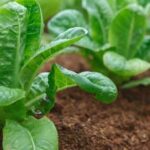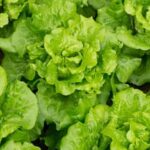Are you interested in gardening with vegetables at home? Whether you’re a seasoned gardener or just starting out, there are numerous benefits to growing your own vegetables. From the satisfaction of harvesting your own produce to the health and environmental advantages, vegetable gardening has something to offer everyone.
One of the key benefits of gardening with vegetables is the opportunity to enjoy fresh, organic produce right from your own backyard. Whether it’s tomatoes, peppers, or leafy greens, there’s nothing quite like the taste of homegrown vegetables. Additionally, growing your own food can also help reduce your carbon footprint by minimizing transportation and packaging waste.
In this article, we’ll explore everything you need to know about gardening with vegetables, from planning and planting to harvesting and troubleshooting common issues. We’ll cover topics such as choosing the right location for your garden, selecting suitable vegetable varieties for your climate and season, and implementing organic pest control methods to protect your crops naturally. So let’s dive in and discover the joys and rewards of growing your own delicious vegetables at home.
Planning Your Vegetable Garden
Choosing the Right Location
When planning your vegetable garden, it is important to consider the location where you will be growing your crops. Vegetables generally require at least 6 hours of sunlight daily, so choose a spot in your yard or on your property that receives ample sunshine. Additionally, ensure that the location is easily accessible for watering and maintenance.
Soil Preparation
One of the most crucial aspects of a successful vegetable garden is soil preparation. Before planting, test the soil in your chosen location for pH levels, drainage, and nutrient content. Amend the soil as necessary to create an optimal growing environment for your vegetables. Adding organic matter such as compost or aged manure can help improve soil structure and fertility.
Sunlight Requirements
Different vegetables have varying sunlight requirements, so it’s important to consider these when planning your garden layout. Leafy greens such as lettuce and spinach can tolerate partial shade, while fruiting vegetables like tomatoes and peppers thrive in full sunlight. Take these factors into account when arranging the layout of your garden beds to ensure that each plant receives the appropriate amount of sunlight for healthy growth.
By carefully considering the location, soil preparation, and sunlight requirements for your vegetable garden, you can set a solid foundation for successful gardening with vegetables. With proper planning and attention to these essential elements, you can create an environment where your homegrown produce will thrive.
Choosing the Right Vegetables for Your Climate and Season
When it comes to gardening with vegetables, one of the most crucial steps is choosing the right vegetables for your climate and season. Different vegetables thrive in different conditions, so it’s important to select varieties that are well-suited to your specific region and the time of year you’ll be planting them.
First and foremost, take note of your climate. If you live in a cooler northern region, you’ll want to focus on cold-hardy vegetables such as broccoli, carrots, and kale. On the other hand, if you reside in a warmer southern climate, heat-loving vegetables like tomatoes, peppers, and squash will be better choices. Research which vegetables are best suited for your particular climate to ensure a successful harvest.
Additionally, consider the season in which you’ll be planting. Certain vegetables are best grown during specific seasons – for example, root vegetables like radishes and turnips do well when planted in the spring or fall, while summer squashes and cucumbers thrive in the heat of summer. By aligning your vegetable choices with the appropriate season, you can optimize their growth and yield.
Lastly, don’t forget to factor in the length of your growing season. Some vegetables require a longer period of warm weather to reach maturity, so be sure to select varieties that have enough time to grow and ripen before the first frost arrives. By being mindful of these factors when choosing your vegetables, you can set yourself up for a bountiful harvest and a successful gardening experience overall.
Seed Starting and Transplanting
When it comes to gardening with vegetables, seed starting and transplanting are crucial stages in the process of growing strong and healthy plants. By starting your vegetables from seeds and transplanting them into your garden at the right time, you can ensure a bountiful harvest. Here are some tips to help you succeed in this important aspect of vegetable gardening.
First and foremost, it’s essential to start your seeds indoors at the appropriate time based on the specific requirements of each type of vegetable. Some plants need an early start indoors while others can be directly sown into the garden. Understanding the needs of each plant will set you up for success when it comes to transplanting them into your garden.
When it’s time to transplant your seedlings into the garden, be sure to harden them off first. This means gradually exposing them to outdoor conditions over the course of a week or so before planting them in their final location. This helps prevent shock and gives the plants a better chance at thriving in their new environment.
Another important tip for successful transplanting is to handle seedlings gently and plant them at the correct depth in well-prepared soil. Proper planting techniques will give your vegetables a strong start, allowing them to develop deep roots and grow vigorously.
To summarize, proper seed starting and transplanting techniques are essential for growing robust vegetables in your garden. By understanding each plant’s needs, hardening off seedlings, and providing proper planting care, you can set yourself up for a successful vegetable gardening season.
| Important Tips | Details |
|---|---|
| Start seeds at the right time | Understanding each plant’s requirements is vital |
| Harden off seedlings | Gradually expose them to outdoor conditions before planting |
| Handle seedlings gently | Proper planting depth in well-prepared soil is critical for strong root development |
Organic Pest and Disease Control
When gardening with vegetables, it’s important to protect your plants from pests and diseases in a natural and eco-friendly way. Here are some tips for keeping your vegetable garden healthy without resorting to harsh chemicals:
- Encourage beneficial insects: Plant flowers that attract beneficial insects such as ladybugs, lacewings, and hoverflies. These insects prey on common garden pests like aphids, mites, and caterpillars, helping to keep their populations in check.
- Use organic pesticides: If pest infestations become too severe, consider using natural pesticides like insecticidal soap or neem oil. These products are derived from plant-based ingredients and are less harmful to the environment than synthetic chemical pesticides.
- Practice crop rotation: Rotating your vegetable crops from year to year can help prevent the buildup of soil-borne diseases. This technique disrupts the life cycles of pests and pathogens, reducing their impact on your garden.
By implementing these organic pest and disease control methods, you can protect your vegetables while minimizing harm to the environment. Embracing natural solutions not only safeguards the health of your garden but also promotes a sustainable approach to gardening with vegetables.
Watering and Feeding
Importance of Proper Watering and Feeding
Watering and feeding are crucial elements in the success of gardening with vegetables. Proper nourishment ensures that your plants are healthy, strong, and able to produce an abundant harvest. Without adequate water and nutrients, vegetables may become susceptible to disease, pests, and poor growth. Understanding the best practices for watering and feeding your vegetable garden is essential for maximizing the yield of your homegrown produce.
Watering Your Vegetable Garden
One of the most important factors in vegetable gardening is proper watering. Vegetables require consistent moisture to thrive, but overwatering can lead to root rot and other issues. It’s important to strike a balance by providing enough water without drowning the plants. The best time to water is early in the morning or late in the afternoon when evaporation rates are low. Additionally, using mulch can help retain moisture in the soil and reduce the frequency of watering.
Feeding Your Vegetable Garden
In addition to water, vegetables also need proper nutrients to grow and produce high-quality yields. Fertilizing your garden with a balanced blend of nitrogen, phosphorus, and potassium will help ensure healthy plant development. Organic fertilizers such as compost or manure are excellent choices as they provide long-term benefits to the soil and promote overall soil health. Understanding the specific nutritional needs of different vegetables is also important for successful gardening with vegetables.
By following these best practices for watering and feeding your vegetable garden, you can create an environment that fosters healthy plant growth and maximizes your vegetable harvest.
Harvesting and Storage
One of the most rewarding aspects of gardening with vegetables is the ability to harvest and enjoy the fruits of your labor. By following some simple guidelines, you can maximize the yield of your homegrown vegetables and ensure that they are stored properly for long-term enjoyment.
When it comes to harvesting your vegetables, timing is key. Different vegetables have different optimal harvest times, so it’s important to do some research or consult with experienced gardeners to know when each crop is at its peak. For example, tomatoes should be picked when they are fully colored but still firm, while leafy greens like lettuce and spinach can be harvested as soon as they reach a size suitable for eating.
Once you have harvested your vegetables, proper storage is essential to maintain their freshness and flavor. Many root vegetables like potatoes, carrots, and onions can be stored in a cool, dark place for several months. Leafy greens and herbs can be kept fresh by wrapping them in damp paper towels and storing them in the refrigerator. Tomatoes and other fruits should be stored at room temperature until ripe, then refrigerated if not eaten right away.
Properly harvesting and storing your homegrown vegetables will allow you to savor the flavors of your garden long after the growing season has ended. It’s a satisfying feeling to know that you are able to enjoy the fruits of your labor throughout the year.
| Vegetable | Optimal Harvest Time |
|---|---|
| Tomatoes | Fully colored but still firm |
| Lettuce | As soon as they reach a suitable size |
| Potatoes | After reaching maturity |
| Carrots | After reaching an appropriate size |
Troubleshooting Common Issues in Vegetable Gardening
When gardening with vegetables, it’s important to be prepared for potential issues that may arise throughout the growing process. From yellowing leaves to poor yield, there are a variety of common problems that can affect your vegetable garden. By being aware of these issues and knowing how to troubleshoot them, you can help ensure a successful and bountiful harvest.
One common issue that many vegetable gardeners encounter is yellowing leaves on their plants. This can be caused by a variety of factors, including nutrient deficiencies, overwatering, or pests. To troubleshoot this problem, it’s important to first identify the cause.
Conduct a soil test to check for any nutrient deficiencies and adjust your fertilization schedule accordingly. Additionally, make sure you are not overwatering your plants and consider using natural pest control methods to eliminate any insects that may be causing damage to the foliage.
Another common issue in vegetable gardening is poor yield. If you’re not seeing the expected amount of produce from your plants, there could be several reasons for this.
Poor soil quality, inadequate sunlight, and improper spacing between plants are just a few factors that can contribute to low yield. To troubleshoot this issue, consider amending your soil with organic matter to improve its quality, ensuring that your plants are getting at least 6-8 hours of sunlight per day, and following recommended planting distance guidelines for each type of vegetable.
In addition to yellowing leaves and poor yield, other common issues in vegetable gardening may include stunted growth, wilting plants, or fungal diseases. By staying vigilant and regularly inspecting your garden for any signs of trouble, you can address these issues promptly and work towards a thriving vegetable garden. Remember that every challenge presents an opportunity to learn and improve your gardening skills.
Conclusion
In conclusion, gardening with vegetables is not only a rewarding and enjoyable activity but also a fantastic way to ensure a fresh and healthy supply of produce for you and your family. By following the tips and guidelines outlined in this article, you can successfully plan, plant, nurture, and harvest a bountiful vegetable garden right in your own backyard.
The benefits of growing your own vegetables are numerous, including being able to enjoy the taste of fresh, organic produce, saving money on grocery bills, and reducing your carbon footprint by minimizing transportation miles.
Additionally, gardening with vegetables provides an excellent opportunity to connect with nature and experience the satisfaction of nurturing plants from seed to harvest. There’s something incredibly fulfilling about tending to a garden and watching it flourish under your care. Whether you have a green thumb or are new to gardening, growing your own vegetables can be a fun and educational activity for people of all ages.
As you embark on your journey of gardening with vegetables, take the time to research which plants will thrive best in your specific climate and season. By carefully planning and tending to your garden’s needs – from soil preparation to pest control – you can ensure a successful harvest time after time. Embrace the joy of growing your own food at home and reap the many rewards that come with it.
Frequently Asked Questions
What Vegetables Should Not Be Planted Together?
Some vegetables should not be planted together due to their different nutrient needs, growth patterns, or susceptibility to the same pests and diseases. For example, potatoes and tomatoes are both in the nightshade family and can share diseases, so they should be kept apart.
What Vegetables Can Beginners Grow in a Garden?
Beginners can start with easy-to-grow vegetables like lettuce, radishes, and green beans. These plants are relatively low-maintenance and forgiving for novice gardeners. Herbs like basil and mint are also good options for beginners.
What Grows Well Together in a Vegetable Garden?
Certain combinations of vegetables grow well together in a vegetable garden, benefiting from each other’s presence. For instance, planting carrots with onions can help deter carrot flies, while planting tall-growing plants like corn alongside vine plants like squash can maximize space by allowing them to support each other as they grow upwards.

If you’re looking to get into vegetable gardening, or are just looking for some tips on how to make your current garden better, then you’ve come to the right place! My name is Ethel and I have been gardening for years. In this blog, I’m going to share with you some of my best tips on how to create a successful vegetable garden.





